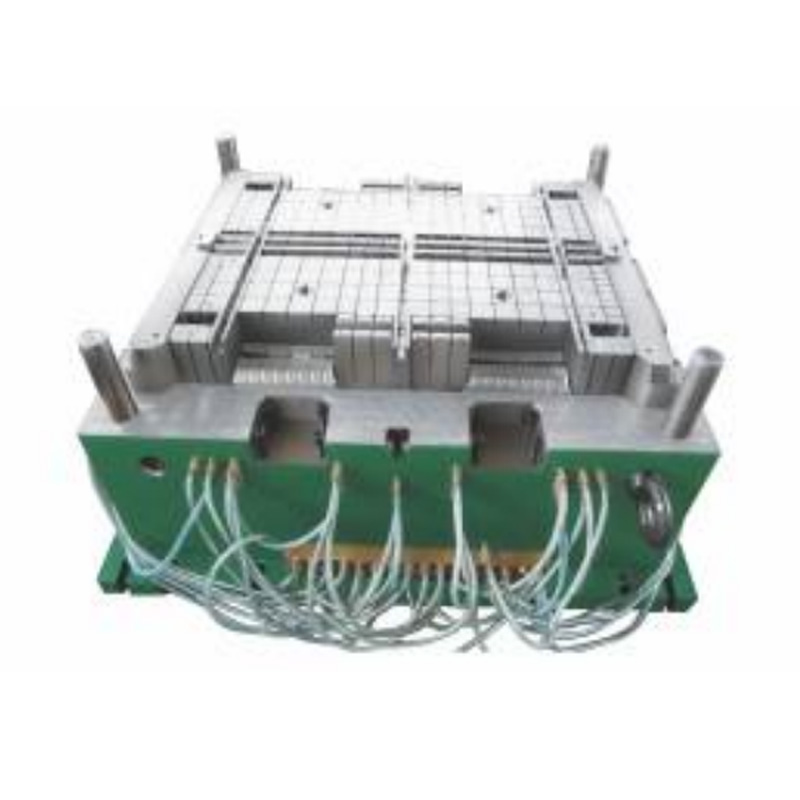Plastic Pallet Mold is a critical component in the large-scale manufacturing of durable pallets for logistics, warehousing, and industrial use. In high-frequency production environments, molds face continuous mechanical stress, repeated injection cycles, and elevated temperatures. Over time, these conditions can cause wear, surface degradation, and reduced mold life, directly impacting product quality and operational efficiency. Understanding the main factors contributing to wear and implementing preventive measures is essential to ensure consistent production and cost-effectiveness.

Primary Factors Contributing to Mold Wear
- Mechanical Stress: Continuous injection cycles exert repeated pressure on mold cavities and movable components, causing abrasion and surface erosion.
- Thermal Fatigue: Repeated heating and cooling cycles cause expansion and contraction, potentially generating microcracks and structural weaknesses.
- Material Flow Erosion: High-velocity molten plastic can gradually wear down critical areas, including gates, runners, and cavity surfaces.
- Friction from Moving Parts: Ejector pins, sliders, and other components experience constant friction, increasing the risk of localized wear.
- Corrosion and Chemical Attack: Certain additives or moisture in plastic resins may react with the mold surface, accelerating degradation over time.
Material Selection for Improved Durability
- Hardened Steel: High-quality hardened steel can resist abrasion and thermal fatigue more effectively than standard steel.
- Stainless Steel Options: Stainless steel offers corrosion resistance, reducing chemical-induced wear in molds exposed to moisture or reactive plastics.
- Surface Treatments: Nitriding, chrome plating, and polishing enhance surface hardness, reduce friction, and prolong mold lifespan.
- Protective Coatings: Specialized coatings protect against abrasion, corrosion, and thermal damage, particularly in high-stress regions.
Design Considerations to Reduce Wear
- Uniform Wall Thickness: Consistent mold thickness decreases stress concentration and prevents localized wear.
- Optimized Gate and Runner Layout: Strategic placement ensures smooth material flow, reducing erosion in high-velocity regions.
- Reinforced Critical Areas: Corners, edges, and frequently contacted surfaces can be strengthened to resist repeated stress.
- Efficient Cooling Channels: Uniform cooling prevents thermal fatigue, warping, and uneven surface degradation.
- Reduced Moving Components: Reducing the number of sliders or pins where possible decreases friction-related wear.
Process Control and Maintenance Strategies
- Regular Inspections: Frequent checks of cavity surfaces, ejector pins, and runners help detect early signs of wear.
- Preventive Maintenance: Polishing, minor repairs, and replacement of worn components maintain consistent performance.
- Lubrication and Handling: Proper mold release agents and careful handling reduce unnecessary abrasion and mechanical stress.
- Production Parameter Optimization: Controlling injection speed, pressure, and temperature prevents overloading and excessive wear.
- Monitoring Wear Patterns: Tracking high-stress zones allows targeted improvements to design or process before major issues arise.
Benefits of Implementing Wear Mitigation Measures
- Extended Mold Life: Reducing wear ensures molds remain functional for a longer duration without frequent replacements.
- Consistent Product Quality: Maintaining mold integrity prevents dimensional inaccuracies and surface defects in pallets.
- Lower Downtime: Well-maintained molds decrease the likelihood of unplanned stoppages, improving production efficiency.
- Cost Savings: Investing in durable materials, surface treatments, and preventive maintenance reduces long-term operational costs.
- Enhanced Safety: Reliable molds produce structurally sound pallets, reducing risks during handling and transport.
Ensuring Reliability of Plastic Pallet Mold in High-Volume Production
High-frequency production exposes Plastic Pallet Mold to mechanical, thermal, and chemical stress, making wear a critical concern. Mechanical abrasion, thermal fatigue, and material flow erosion are the primary contributors to mold degradation. By selecting high-quality materials, applying surface treatments, optimizing mold design, and implementing proactive maintenance, manufacturers can significantly reduce wear, maintain consistent product quality, and extend mold lifespan. Effective wear management ensures reliable, cost-efficient, and high-quality production of plastic pallets, meeting both operational requirements and customer expectations.

